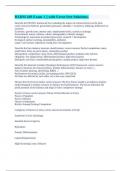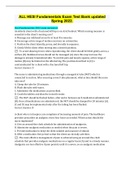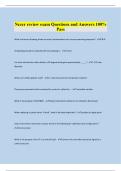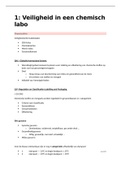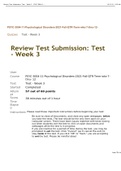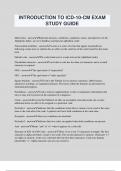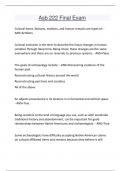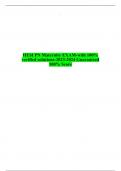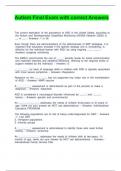Exam (elaborations)
BADM 449 Exam 1 || with Error-free Solutions.
- Module
- Institution
Describe the PESTEL framework for evaluating the impact of external factors on the firm. correct answers Political: government pressures, subsidies + incentives, lobbying, differences in countries Economic: growth rates, interest rates, employment levels, currency exchange Sociocultural: norms, c...
[Show more]
